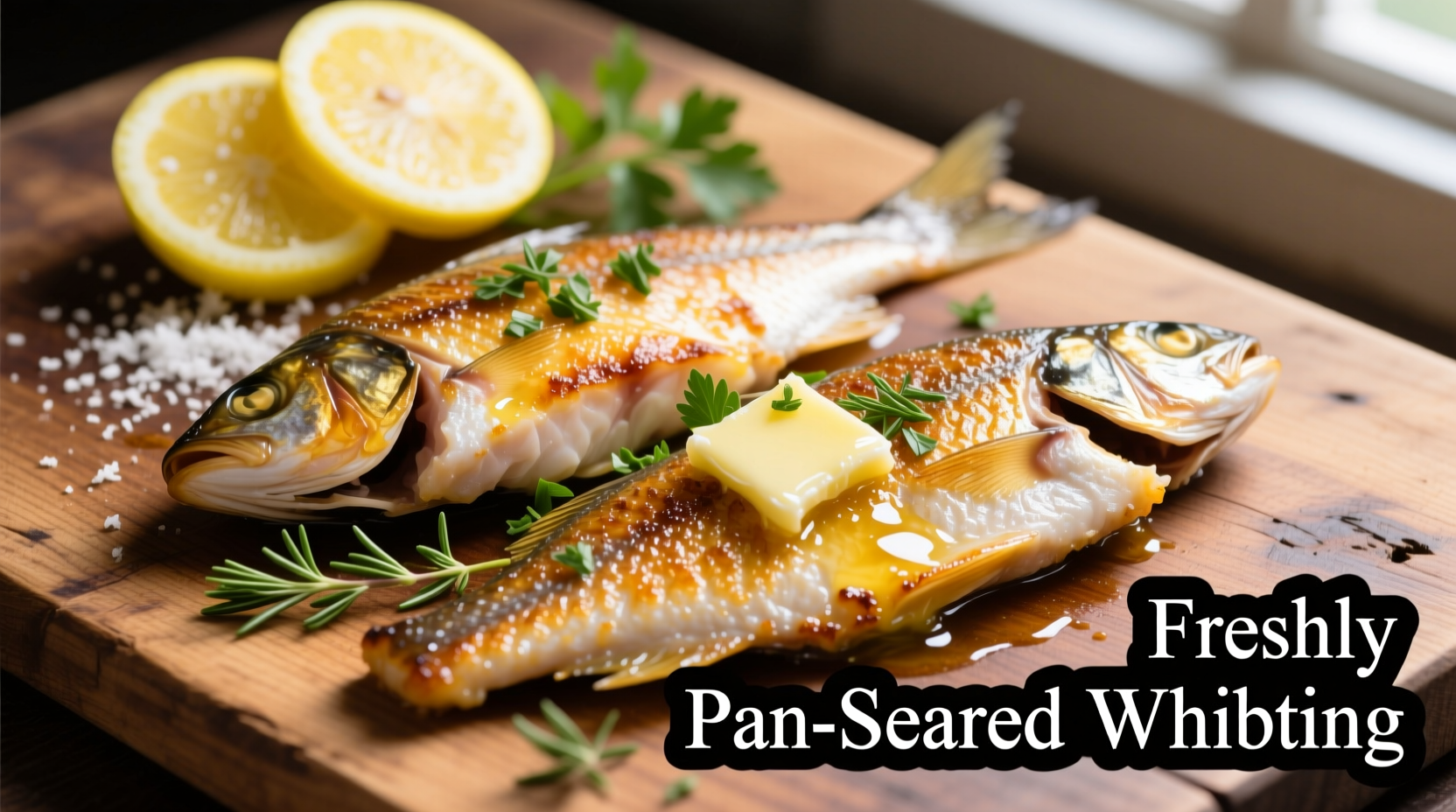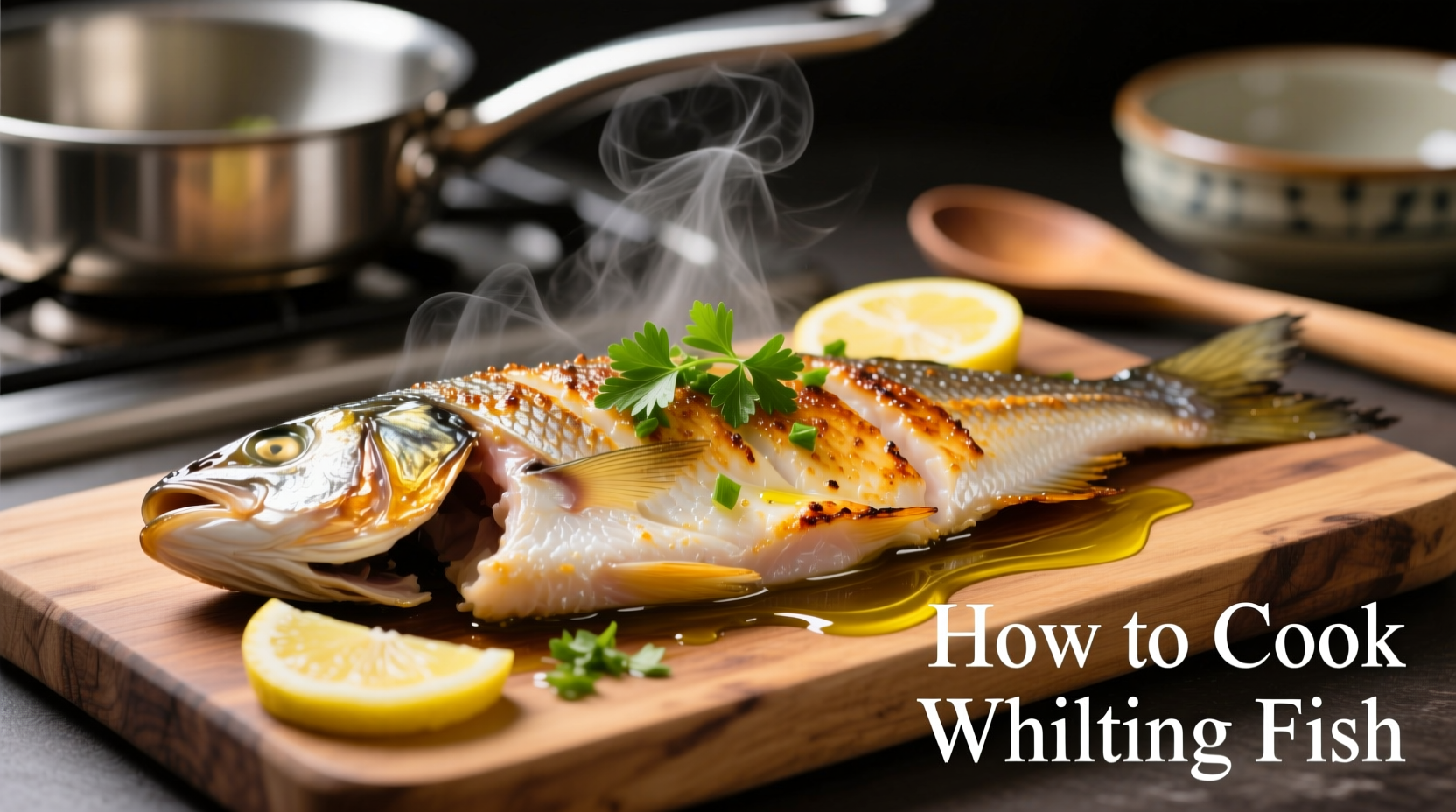Whiting fish offers a delicate, mild flavor and tender texture that makes it perfect for weeknight dinners. This affordable alternative to cod or haddock responds beautifully to simple preparations that highlight its natural qualities. When cooked properly, whiting delivers moist, flaky results that pair well with countless seasonal ingredients.
Why Whiting Deserves a Spot in Your Weekly Rotation
Often overlooked in favor of pricier options, whiting (also called silver hake) contains 19g of protein per 3-ounce serving with just 100 calories. According to FDA seafood guidelines, this lean fish provides essential omega-3 fatty acids while maintaining low mercury levels, making it safe for regular consumption. Its quick cooking time and forgiving nature make whiting ideal for beginner cooks and busy weeknights.
Preparation Essentials: Setting Up for Success
Proper preparation separates good fish from great fish. Start by examining your whiting for firm flesh and clear eyes if purchasing whole. The flesh should spring back when pressed and smell fresh like the ocean—never fishy.
Drying is critical: Pat fillets thoroughly with paper towels before cooking. Moisture creates steam instead of the golden sear you want. For whole fish, rinse under cold water, remove gills and innards, then dry inside and out.
Seasoning timing matters: Salt fish 15-20 minutes before cooking to allow penetration without drawing out moisture. Add pepper and other seasonings just before cooking to prevent burning.
Mastering Three Foolproof Cooking Methods
| Cooking Method | Temperature | Time (per ½" thickness) | Best For |
|---|---|---|---|
| Pan-searing | Medium-high heat | 3-4 minutes per side | Crispy skin, restaurant-quality results |
| Baking | 400°F | 8-12 minutes | Hands-off cooking, meal prep |
| Grilling | Medium heat | 4-6 minutes per side | Summer meals, smoky flavor |
Pan-Searing Perfection
Heat 2 tablespoons of olive oil or clarified butter in a stainless steel or cast iron skillet until shimmering. Place fish skin-side down (if applicable) at a 45-degree angle to distribute oil evenly. Cook undisturbed for 3-4 minutes until skin releases naturally from the pan. Flip carefully and finish cooking 2-3 minutes until opaque throughout.
Pro tip: Add lemon slices and fresh herbs to the pan during the last minute of cooking. Tilt the pan and spoon hot oil over the fish for infused flavor without flipping delicate fillets.

Baking for Consistent Results
Preheat oven to 400°F. Place fish on a parchment-lined baking sheet. Drizzle with olive oil and season. Bake 8-12 minutes until fish reaches 145°F internally. For added flavor, top with cherry tomatoes, olives, and capers during the last 5 minutes of cooking.
When to choose baking: This method shines when cooking multiple portions or preparing ahead. The gentle, even heat prevents overcooking common with stovetop methods, making it ideal for less experienced cooks.
Grilling Without the Stress
Clean and oil grill grates thoroughly. For fillets, use a fish basket or aluminum foil packet with holes poked for grill marks. Cook over medium heat 4-6 minutes per side. For whole fish, stuff cavity with lemon slices and herbs, then grill directly on oiled grates.
Avoid common mistakes: Never press down on fish with your spatula—this squeezes out precious moisture. Wait until fish naturally releases from the grates before attempting to flip.
Flavor Pairings That Elevate Whiting
Whiting's mild flavor serves as a perfect canvas for complementary ingredients. Consider these pairings based on culinary tradition:
- Mediterranean: Lemon, garlic, oregano, Kalamata olives, and extra virgin olive oil
- Asian-inspired: Ginger, scallions, soy sauce, and sesame oil (add after cooking to prevent burning)
- Cajun: Paprika, cayenne, thyme, and garlic powder (use sparingly to avoid overpowering)
Acidity balances richness—a squeeze of fresh lemon juice just before serving brightens flavors dramatically. For sauce lovers, a simple beurre blanc or herb-infused olive oil complements without overwhelming.
Avoiding the Top 3 Whiting Cooking Mistakes
Even experienced cooks stumble with delicate fish. These pitfalls sabotage otherwise perfect meals:
- Overcooking: Whiting continues cooking after removal from heat. Pull it at 140°F—it will reach the FDA-recommended 145°F while resting. Overcooked whiting becomes dry and tough.
- Wet fish: Skipping the drying step prevents proper searing. Always pat fillets bone-dry with paper towels before seasoning.
- Moving too soon: Let fish develop a crust before attempting to flip. It will release naturally when ready—forcing it causes tearing.
Serving and Storage Guidance
Serve whiting immediately for best texture. Pair with roasted vegetables, quinoa pilaf, or a crisp green salad. Leftovers keep refrigerated for 2 days—reheat gently in a 275°F oven for 8-10 minutes to maintain moisture.
For meal prep, cook whiting plain and add different flavor profiles when reheating: Mediterranean herbs for lunch, Asian-inspired sauce for dinner. This versatile fish adapts beautifully to various cuisines throughout the week.











 浙公网安备
33010002000092号
浙公网安备
33010002000092号 浙B2-20120091-4
浙B2-20120091-4